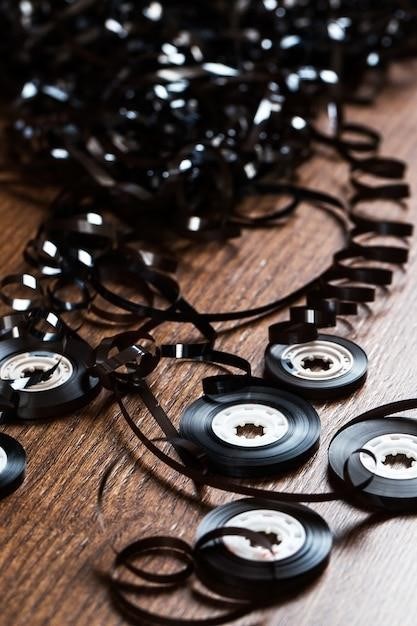Olympus VN-7200 Manual
This manual provides comprehensive instructions and information on using the Olympus VN-7200 Digital Voice Recorder. It covers various aspects, including recording capabilities, playback and management, connectivity, battery life, physical specifications, troubleshooting, and support. You can access the manual for free online or download it in PDF format. The manual also includes user reviews and feedback from other owners of the VN-7200, providing valuable insights into its features and performance.
Overview
The Olympus VN-7200 is a compact and user-friendly digital voice recorder designed for capturing high-quality audio recordings in various settings. This device is a popular choice for professionals and individuals who need a reliable and portable solution for recording lectures, meetings, interviews, or personal notes. The VN-7200 boasts a range of features, including a built-in microphone for clear audio capture, a speaker for playback, and a generous 2GB of internal memory, capable of storing up to 1,151 hours of audio recordings.
The VN-7200 is renowned for its ease of use, with intuitive controls and a simple interface that makes navigation straightforward. Users can readily start recording, pause, stop, and manage their recordings with ease. The VN-7200 also supports various file formats, including MP3, ensuring compatibility with a wide range of devices and software.
This manual serves as a comprehensive guide to understanding and utilizing the full potential of the Olympus VN-7200. It provides detailed instructions on operating the device, managing recordings, connecting to a computer, customizing settings, and troubleshooting common issues. Whether you are a seasoned audio recorder user or a first-time user, this manual will equip you with the knowledge to make the most of your VN-7200 experience.
Key Features
The Olympus VN-7200 is packed with features designed to enhance your audio recording experience. Here are some of its standout features⁚
- High-Quality Audio Recording⁚ The VN-7200 incorporates a built-in microphone that captures clear and crisp audio, ensuring that your recordings are of exceptional quality, even in noisy environments.
- Generous Memory Capacity⁚ With 2GB of built-in memory, the VN-7200 can store up to 1,151 hours of audio recordings, providing ample space for extended recording sessions without the need for frequent file transfers.
- User-Friendly Interface⁚ The VN-7200 boasts an intuitive interface with simple controls, making it easy to navigate and operate, even for first-time users. This user-friendly design ensures a seamless recording and playback experience.
- Multiple File Formats⁚ The VN-7200 supports various audio file formats, including MP3, allowing for compatibility with a wide range of devices and software. This ensures that your recordings can be easily shared and accessed on different platforms.
- Convenient Playback⁚ The VN-7200 includes a built-in speaker, allowing you to listen to your recordings directly on the device. It also features adjustable playback speeds, enabling you to review recordings at your desired pace.
- Compact and Portable⁚ The VN-7200’s compact design and lightweight construction make it extremely portable, allowing you to take it with you wherever you go. This portability ensures that you can capture important audio moments on the go.
These key features make the Olympus VN-7200 a versatile and reliable audio recording solution for various applications.
Recording Capabilities
The Olympus VN-7200 is designed to capture high-quality audio recordings with ease. It offers a range of recording capabilities that cater to various needs and situations⁚
- Stereo Recording⁚ The VN-7200 utilizes a built-in stereo microphone to capture audio from two different directions, resulting in a more immersive and natural sound experience. This is particularly useful for recording meetings, lectures, or interviews where capturing the nuances of multiple speakers is important.
- Adjustable Recording Levels⁚ The VN-7200 allows you to adjust the recording level to match the volume of the audio source. This ensures that recordings are clear and free from distortion, even in environments with varying sound levels. You can fine-tune the sensitivity of the microphone to capture the audio you need most clearly.
- Voice-Activated Recording⁚ This feature allows the VN-7200 to start recording automatically when it detects sound, eliminating the need for manual activation. It is ideal for situations where you want to capture audio only when it is present, such as meetings or lectures where you may not be able to constantly monitor the recording process.
- Time-Stamping⁚ The VN-7200 automatically time-stamps recordings, providing a clear and accurate record of when the audio was captured. This feature is valuable for maintaining organized records and easily referencing recordings based on their timestamps.
- Folder Management⁚ The VN-7200 allows you to create and manage folders, enabling you to organize your recordings into different categories. This feature simplifies file management and makes it easier to locate specific recordings based on their subject matter or date.
With these recording capabilities, the Olympus VN-7200 provides a robust and versatile tool for capturing audio with precision and ease.
Playback and Management
The Olympus VN-7200 offers a user-friendly playback experience and comprehensive management features to navigate and organize your recordings. Here are some key aspects⁚
- Clear Playback⁚ The VN-7200 features a built-in speaker that allows you to listen to recordings directly on the device. The speaker delivers clear and audible playback, making it convenient to review recordings without the need for external equipment.
- Variable Playback Speed⁚ The VN-7200 allows you to adjust the playback speed, enabling you to listen to recordings at a faster or slower pace. This feature is helpful for quickly reviewing long recordings or for slowing down the playback to better understand intricate details.
- A-B Repeat⁚ This function lets you loop a specific section of a recording, allowing you to focus on a particular part of the audio. It is useful for studying or analyzing specific segments of a recording, such as key phrases or important information.
- Digital Noise Reduction⁚ The VN-7200 incorporates digital noise reduction technology to minimize background noise during playback. This feature enhances the clarity of recordings, especially those captured in noisy environments. You can enjoy a cleaner and more focused listening experience.
- File Management⁚ The VN-7200 provides intuitive file management features. You can easily browse through your recordings, create folders to organize them by category, and rename files for better identification. These features simplify the process of managing your audio library.
With its comprehensive playback and management features, the Olympus VN-7200 ensures a smooth and efficient audio experience, making it easy to access, review, and organize your recordings.
Connectivity and Compatibility
The Olympus VN-7200 features a range of connectivity options and compatibility features, allowing seamless integration with your digital devices and workflows. Here’s a breakdown of its key connectivity aspects⁚
- USB Connectivity⁚ The VN-7200 utilizes a standard USB interface for easy connection to a computer or laptop. This connection enables you to transfer recordings to your computer for storage, editing, or sharing. The USB connection also allows you to charge the recorder’s battery.
- PC Compatibility⁚ The VN-7200 is compatible with both Windows and Mac operating systems, ensuring broad compatibility with a wide range of computers. You can transfer recordings, manage files, and use the recorder’s software features seamlessly on your preferred operating system.
- File Format Support⁚ The VN-7200 supports the widely recognized MP3 format for audio recordings. This format ensures compatibility with various playback devices, including smartphones, tablets, and dedicated music players, making it convenient to access your recordings on the go.
- Optional Accessories⁚ The VN-7200 is compatible with optional accessories, such as a foot pedal, which can be used for hands-free recording. These accessories can enhance functionality and convenience, catering to specific recording scenarios and user preferences.
With its versatile connectivity and compatibility features, the Olympus VN-7200 seamlessly integrates into your digital environment, providing a flexible and adaptable audio recording solution for various purposes.
Battery Life and Power
The Olympus VN-7200 is powered by two AAA batteries, providing a reliable and convenient power source for your audio recordings. The battery life of the VN-7200 is dependent on various factors, including the recording mode, volume levels, and battery type. However, the recorder is designed to offer extended recording times, ensuring you can capture your audio content without interruption.
The VN-7200’s battery life is a key consideration for users who frequently record audio for extended periods. The use of high-quality AAA batteries can significantly impact the recording time. For optimal battery performance, it’s recommended to use alkaline batteries or rechargeable batteries specifically designed for digital voice recorders.
To maximize battery life and ensure uninterrupted recording sessions, it’s crucial to follow a few simple guidelines⁚
- Choose the appropriate recording mode⁚ The VN-7200 offers various recording modes, each with different audio quality settings. Selecting a lower quality mode can extend battery life, especially for long recordings.
- Adjust the volume level⁚ Reducing the volume level during recordings can conserve battery power without compromising audio quality.
- Turn off the recorder when not in use⁚ Always ensure the recorder is switched off when not actively recording to prevent unnecessary battery drain.
- Use a USB power source⁚ When the recorder is connected to a computer via USB, it can be powered directly through the USB connection, eliminating the need for batteries.
By adhering to these recommendations, you can effectively manage the VN-7200’s battery life, ensuring uninterrupted recording sessions and maximizing the recorder’s performance.
Physical Specifications
The Olympus VN-7200 is a compact and lightweight digital voice recorder designed for portability and ease of use. Its dimensions and weight make it ideal for carrying in a pocket or bag, allowing you to capture audio on the go. The VN-7200 boasts a sleek and ergonomic design, featuring a user-friendly interface and intuitive controls that simplify the recording and playback processes.
Here are the key physical specifications of the Olympus VN-7200⁚
- Dimensions⁚ 98.5 x 42.0 x 17.2 mm
- Weight⁚ 55 g (without batteries)
- Color⁚ Black
- Display⁚ LCD display for easy viewing of recordings and settings
- Controls⁚ Buttons for recording, playback, volume adjustment, and other functions
- Microphone⁚ Built-in microphone for clear audio capture
- Speaker⁚ Built-in speaker for playback
- Connectivity⁚ USB port for data transfer and charging
- Storage⁚ 2GB internal memory
The VN-7200’s compact size, lightweight design, and intuitive controls make it an excellent choice for individuals seeking a reliable and portable audio recording solution. Its physical specifications ensure that it’s easy to carry, use, and integrate into your daily routine.

Troubleshooting and Support
While the Olympus VN-7200 is generally reliable, there might be instances where you encounter issues or require assistance. This section provides guidance on troubleshooting common problems and accessing support resources.
If you experience any difficulties with your VN-7200, here are some common troubleshooting tips⁚
- Check the batteries⁚ Ensure that the batteries are properly inserted and have sufficient charge. Replace them if necessary.
- Restart the device⁚ Sometimes, a simple restart can resolve minor glitches. Power off the recorder and turn it back on.
- Check the recording settings⁚ Verify that the recording format, quality, and other settings are appropriate for your needs.
- Clean the microphone and speaker⁚ Dust or debris can affect audio quality. Gently clean the microphone and speaker with a soft cloth.
- Update the firmware⁚ Check for available firmware updates on the Olympus website. Updating the firmware can resolve software bugs and improve performance.
If troubleshooting steps don’t resolve the issue, you can contact Olympus Support for further assistance. They provide comprehensive support channels, including phone, email, and online resources. You can also find helpful information and user forums on the Olympus website, where you can connect with other VN-7200 users and seek their advice.
Remember to consult the user manual for detailed instructions and troubleshooting guides. The manual provides specific solutions for various common problems and can help you resolve most issues independently.
Where to Download the Manual
Accessing the Olympus VN-7200 manual is straightforward and can be done through various online platforms. Several websites offer free downloads of the manual in PDF format, providing convenient access to the information you need. Here are some reliable sources for downloading the VN-7200 manual⁚
Olympus Website⁚ The official Olympus website is the primary source for product manuals and support documentation. Navigate to their support section, search for the VN-7200 model, and you’ll likely find the manual available for download.
ManualsLib⁚ This website is a comprehensive repository of user manuals for various electronic devices, including voice recorders. Search for “Olympus VN-7200” on ManualsLib, and you’ll likely find the manual available for download.
Other Online Resources⁚ Websites like ManualsPDF, ManualsOnline, and similar platforms often host user manuals for popular electronic devices. Search for the VN-7200 model on these sites to see if the manual is available.
eBay⁚ While primarily known for online auctions, eBay also offers a variety of user manuals for sale. Search for “Olympus VN-7200 manual” on eBay, and you might find sellers offering digital downloads or physical copies.
When downloading the manual, ensure that you’re downloading it from a reputable source to avoid malware or viruses. Verify the website’s authenticity and check for user reviews or ratings before downloading any files.

User Reviews and Feedback
User reviews and feedback provide valuable insights into the real-world experience of using the Olympus VN-7200. These reviews can help potential buyers make informed decisions and understand the strengths and weaknesses of the device. Based on online reviews, the VN-7200 generally receives positive feedback for its user-friendliness, compact size, and reliable recording capabilities.
Users praise the VN-7200 for its intuitive interface, making it easy to navigate and operate. The device’s small size and lightweight design are also appreciated, making it convenient for carrying around and discreet recording. The built-in microphone is praised for capturing clear and high-quality audio, even in noisy environments.
However, some users have expressed concerns about the lack of certain features, such as the inability to transfer recordings directly to a computer without a cable. Additionally, some users have reported issues with the battery life, with the device needing to be recharged frequently.
Overall, the Olympus VN-7200 receives positive reviews for its ease of use, portability, and recording quality. However, it’s important to consider the user feedback and weigh the pros and cons before making a purchase decision.



























